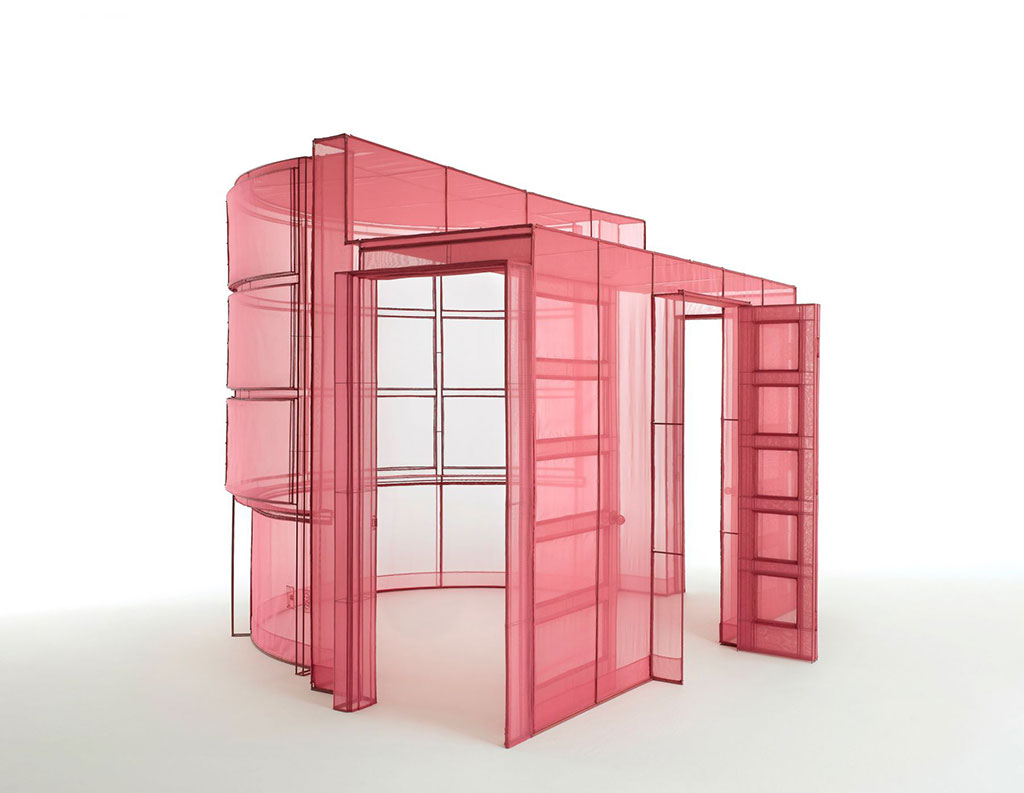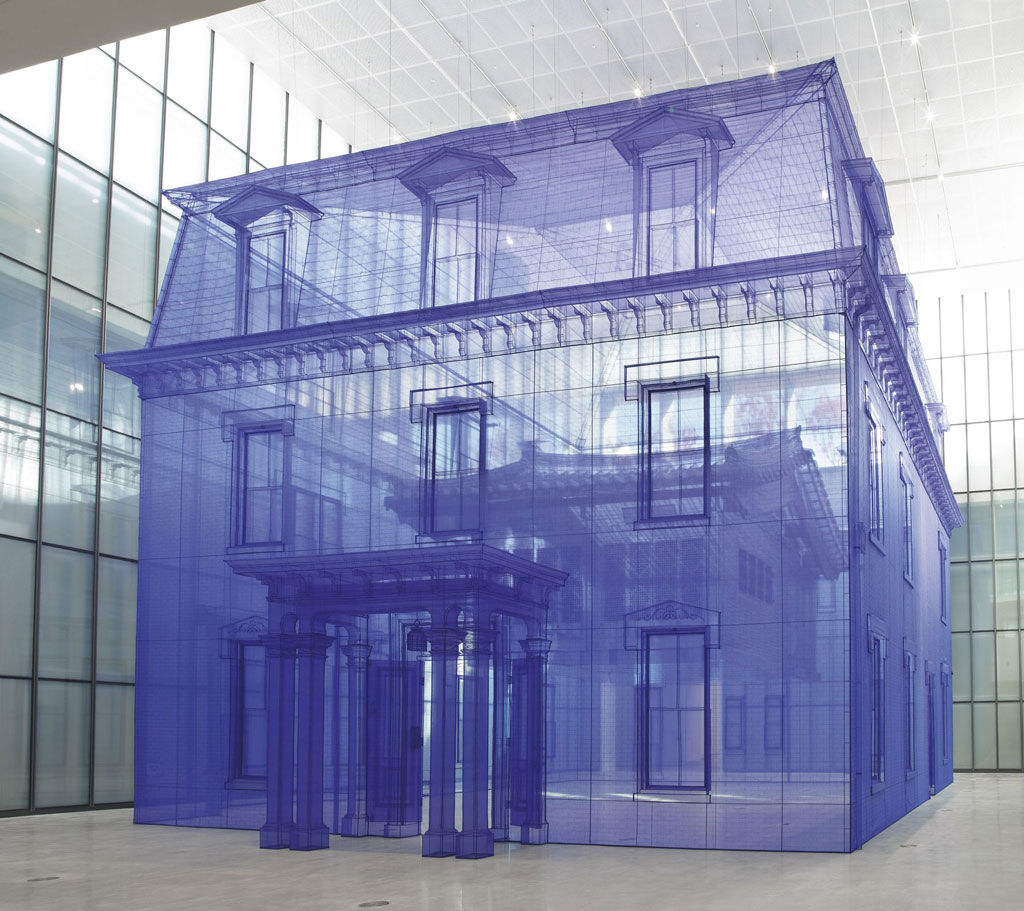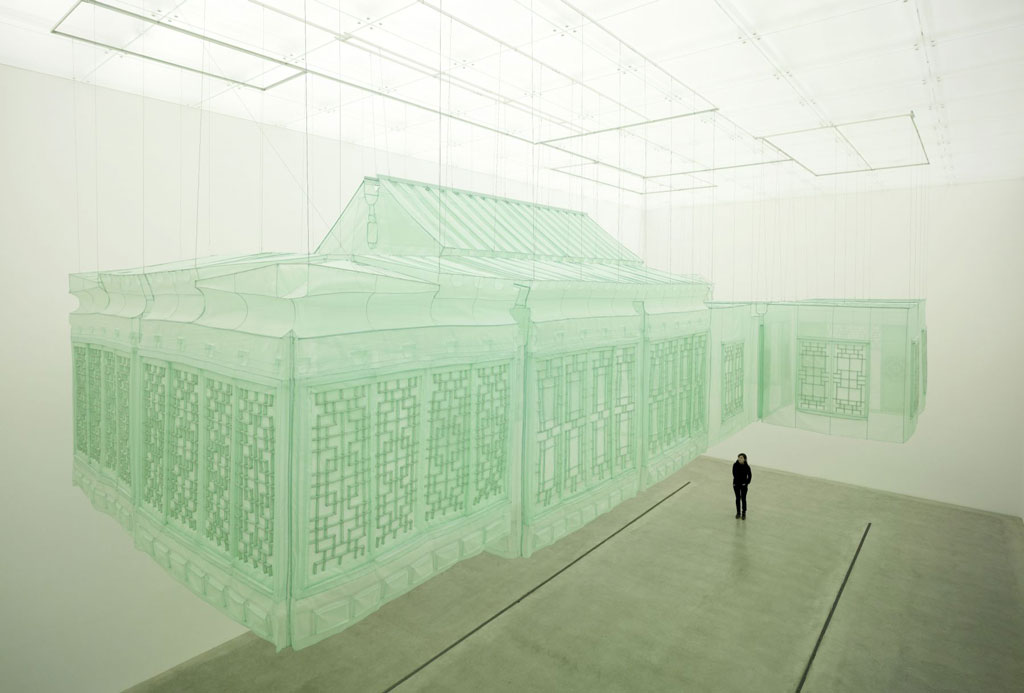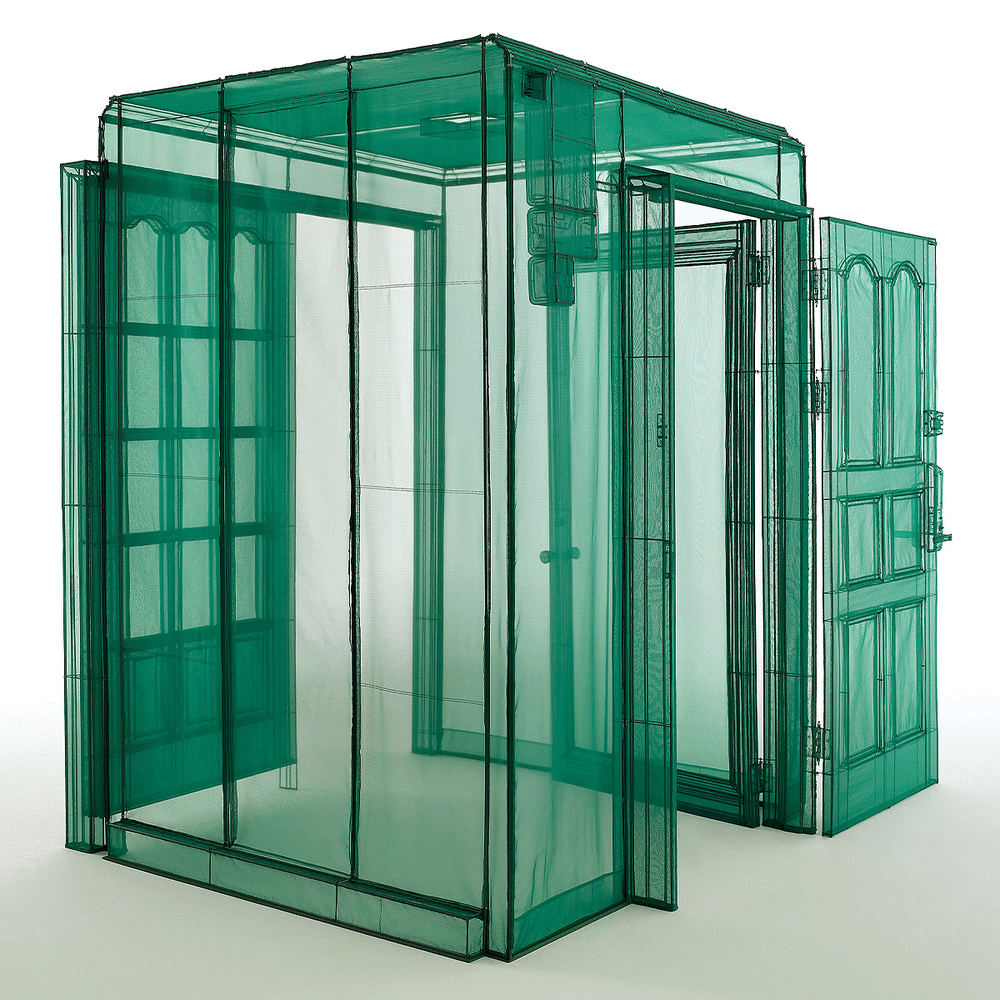ART CITIES:London-Do Ho Suh
 Born in Seoul, Do Ho Suh transforms his personal experiences into artworks, particularly his move from South Korea to the USA and then in London, as well as the specific domestic spaces where he has lived, including his childhood home, a house in Rhode Island where he lived as a student, and his apartment in London. Transparency, or the oscillation between opacity and visibility, appears throughout much of the artist’s work, evoking the layering of space and intermediate areas in Korean architecture.
Born in Seoul, Do Ho Suh transforms his personal experiences into artworks, particularly his move from South Korea to the USA and then in London, as well as the specific domestic spaces where he has lived, including his childhood home, a house in Rhode Island where he lived as a student, and his apartment in London. Transparency, or the oscillation between opacity and visibility, appears throughout much of the artist’s work, evoking the layering of space and intermediate areas in Korean architecture.
By Efi Michalarou
Photo: Lehmann Maupin Gallery Archive
Showcasing the range of Suh’s practice, including large and small-scale architectural fabric works, thread drawings, watercolors, and bronze sculpture his solo exhibition at Lehmann Maupin Gallery marks twenty years since Suh’s first exhibition with Lehmann Maupin in the United States. Suh is known for a multidisciplinary practice that confronts questions of home, memory, marginality and the correlation between psychic and physical space. His autobiographical fabric sculptures recreate, to scale, spaces of his former residences and studios. Reflecting an itinerant life, these highly detailed portraits feature buildings, rooms and domestic objects from past and present homes in Korea, Rhode Island, Berlin, London, and New York. Anchoring this presentation is “Hub-1, Entrance, 296-8, Sungbook-Dong, Sungboo-Ku, Seoul, Korea” (2018), a one-to-one scale reproduction of a corridor area from Suh’s childhood home in Seoul. The work, part of the artist’s renowned “Hubs” series, explores the in-between spaces one inhabits before entering rooms, where the relationship between exterior and interior, public and private is blurred. The artist’s interest in transitional spaces can be read, in part, as a response to the porous quality of traditional Korean architecture, in which rooms are reconfigured for different purposes throughout the day and the natural environment beyond the brick and rice paper walls is keenly felt. The presentation also includes a set of “Specimen” works exquisitely sewn fabric versions of household objects found consistently, but with subtle variations from country to country, in homes across the world—in this case, lighting fixtures from Suh’s New York studio and its adjacent corridors, as well as his former homes in Seoul, Berlin, and Providence. Whether a light fixture, fuse box or intercom, Suh distills the feeling and memory of a place in these quotidian forms; simulacra of the objects that silently punctuate the everyday. In his three-columned “Karma” (2015), the artist focuses on human connectivity through a literal representation of the self in relation to others. Visualizing the complex interconnected web of relationships that make up one’s life by stacking uniform figures, one on top of another, Suh questions where the individual starts and ends.
Do Ho Suh was born in Seoul, Korea. After earning his BFA and MFA in Oriental Painting from Seoul National University, and fulfilling his term of mandatory service in the South Korean military, Suh relocated to the United States to continue his studies at the Rhode Island School of Design and Yale University. In exquisitely made works, Do Ho Suh explores contemporary arrangements of space and the unstable boundaries of its categorisation along lines of individuality and collectivity, physicality and immateriality, mobility and fixity. The multiplicity of individuality is tested through meditative processes of repetition: whether interlinked along a lattice of fishing nets, amassed into monumental tornado-like forms, absent from ranks of empty uniforms, or present in every yearbook photo taken at the artist’s high school over 60 years, the artist uses the reproduced human figure to explore sensitively, and with spectacular formal effect, the ways in which personal space inherently extends into the collective sphere. It is with the same elegant economy of conceptual means, focusing on simple yet transformative acts of repetition, that Suh treats the complex psychological and physical architectural structures of the concept of ‘home’. In work for which he is widely known, the artist meticulously constructs proportionally exact replicas of dwelling places, architectural features, or household appliances – kitchen sinks, toilets and microwaves – from stitched planes of translucent, colored polyester fabric. Often reflections of places the artist has inhabited, such as his childhood home or Western apartments, these delicately precise, weightless impressions seem to exist between imagination and reality. Suh has spoken of the distinctive openness to the environment of Korean homes; more than repositories of personal memory or nostalgic projections, his works respond to the indistinct boundaries between psychic interior and objective exterior, which make of home an ongoing lived function rather than a physical structure. Constructed much like items of clothing, Suh’s portable modules of space were designed to be packed in his suitcase as he travelled between continents, the artist’s own personal peripatetic history bleeding into the universalised nomadism of a globalised world. Transitory, connecting spaces (corridors, staircases, bridges, gateways) feature often in the artist’s drawings and sculptural installations: rather than borders, Suh is fascinated with the linking spaces through which the body travels between cultures. In this international era, the house is a protective mantle transformed by its arrivals in different contexts: in different works, homes from different stages of the artist’s life nest one inside the other in differently colored swathes of fabric, or come dramatically into collision in painstakingly constructed models. During his career, he has staged international solo exhibitions and site-specific projects in numerous well-known venues, such as the Contemporary Arts Centre in Cincinnati and he represented Korea at the 49th Venice Biennale in 2001.
Photo: Do Ho Suh: Passage/s, Installation view, Bildmuseet, Umea University, Stockholm, Sweden, 2017–2018, © Do Ho Suh, Courtesy the artist, Lehmann Maupin Gallery and Bildmuseet-Stockholm
Info: Lehmann Maupin Gallery, 1 Cromwell Place, South Kensington, London, Duration: 3/12/2020-20/2/2021, Days & Hours: Mon-Sat 10:00-18 by appointment only (schedule your visit), www.lehmannmaupin.com




